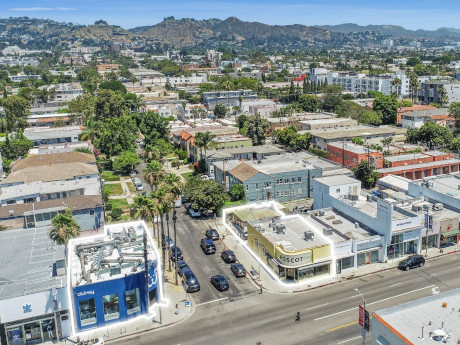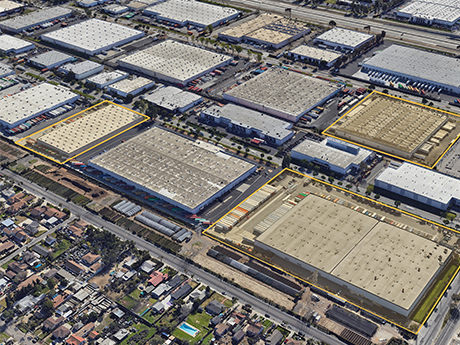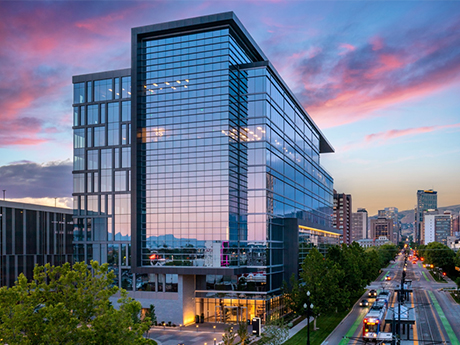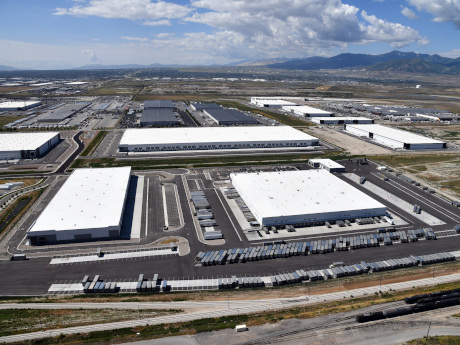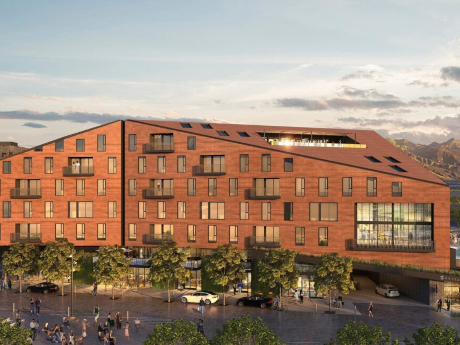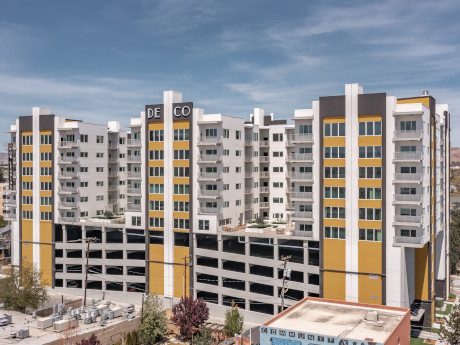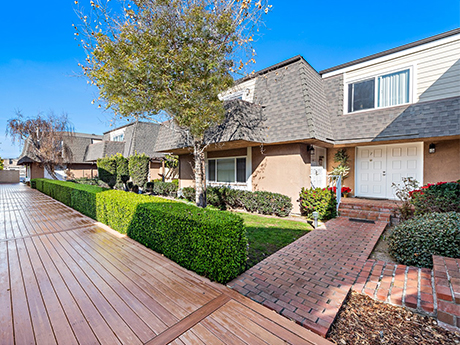— By Gary Baragona, Vice President of Research, Kidder Mathews — Home to an eclectic mix of local retailers, award-winning restaurants and the world’s most prestigious brands, Los Angeles has long been one of the most dynamic retail markets in the country. However, sector dynamics significantly shifted during the pandemic as retailers began to rely heavily on their online sales to stay in business and remain profitable. While consumer preferences further evolved in 2022 and 2023, there has been a noticeable slowdown in consumer spending, largely due to ongoing economic challenges, reduced buying power, decreased savings and increased credit card debt. On the surface, overall market fundamentals within the commercial real estate retail sector appear to be relatively stable. Some key indicators illustrate market resiliency, but other trends demonstrate the recent struggles felt by the retail sector and the challenges that may lie ahead. For example, total leasing activity across the Los Angeles region was down 15 percent in 2023 compared to the previous year, and down 25 percent compared to pre-COVID averages. The total vacancy rate across Los Angeles increased to 5.3 percent during the first quarter of 2024 and has consistently hovered between 5 percent and 5.3 percent …
Western Market Reports
— By Edward F. Del Beccaro, Executive Vice President, TRI Commercial — The major Northern California industrial markets contain a total of more than 860 million square feet of industrial buildings. The San Francisco Bay Area, North Bay, Silicon Valley, Sacramento and Central Valley have all experienced a falloff in tenant demand from 2021 to 2022 pandemic highs. Most markets experienced negative absorption in fourth-quarter 2023, including sublease space coming on the market that resulted in rents either plateauing or decreasing. Nevertheless, the outlook is still positive based on the various economic drivers pushing the market. For instance, manufacturers are benefitting from onshoring, with a projected 40 percent reduction in sourced material from China, per a recent report from Alix Partners. In addition, declining interest rates and continuing inflation will cause institutional money to flow into the industrial sector versus the office sector, according to a March 2024 ProLogis report. Below are various industrial submarket reviews: In the Oakland/East Bay Industrial I-80/880 Corridor, year-end 2023 experienced a slowdown in demand due to new construction and existing space becoming available. More than 10.2 million square feet is available, reflecting negative absorption of more than 778,000 square feet last year. The Port …
— By Robert Peddicord, Executive Managing Director, CBRE South Bay — The Greater Los Angeles (GLA) industrial market is showing stability while enduring challenges like higher vacancy rates, negative absorption and an anticipated decrease in lease rates. Markets across the country continue to adjust post-pandemic, and GLA is no exception. Nevertheless, the GLA industrial market is poised for long-term resilience, thanks, in part, to its proximity to the ports of Los Angeles and Long Beach, while LA’s large population base drives the need for warehousing. San Pedro Bay Ports The GLA industrial market continues to rely on the San Pedro Bay ports, the two largest ports by volume in the U.S. Although there has been an average decrease of 1.9 percent in cargo volume over the past five years, the San Pedro Bay terminal operators and dockworkers moved 16.6 million TEUs (twenty-foot equivalent units) in 2023, outpacing the TEUs moved at other ports. Disruptions from the Suez and Panama canals may divert more U.S.-bound cargo ships from Asia to West Coast ports. The West Coast benefits from lower shipping container costs, with about a 40 percent discount shipping to the West Coast compared to the East Coast. U.S. importers, shippers …
— By Nadia Letey, senior vice president, CBRE — The global office landscape has markedly changed post-pandemic. Now, amidst economic headwinds and the ongoing stabilization of return-to-office mandates, U.S. office markets like Salt Lake City are undergoing various shifts that are set to shape real estate dynamics in 2024. At the same time, Utah’s economy remains a highly desirable location to do business, in large part bolstered by an exceptionally strong talent pool. What’s Changing: Development Slowdown Poised to Ease Supply Demand Imbalances Salt Lake City saw a 42 percent year-over-year decrease in total office space under construction in fourth-quarter 2023, marking an all-time low. High interest rates, along with record-high vacancies, will continue to deter developers from breaking ground in the near term without significant pre-lease activity. This thinning construction pipeline will likely reduce supply side risks over the next several years as demand can be placed within second-generation space with elevated vacancy. Existing properties — especially in amenity-rich locations — will do well to attract tenants. The emphasis on creating a collaborative and inviting workspace will continue to be important to bring employees into the office. Projects that are moving from planned to under construction are hedging their risk by …
— By Jarrod Hunt, vice chair, Colliers — The Utah industrial market continues to perform very well given the reduction in the average deal size in 2023 (illustrated in the charts for both Utah and Salt Lake Counties below). The entrepreneurial spirit that continues to be the backbone of Utah’s economy is evident with the smaller lease sizes. This was a welcome opportunity for companies confined to limited options for growth over the past economic run-up. However, we have seen a notable increase in out-of-market tenant inquiries, with many in search of larger blocks of space in the New Year. We expect the pendulum to swing the other direction this year with an increase in the average square footage of completed deals, an overall increase in the number of deals and a reduction in the vacancy rates, which will put a solid floor on lease rates. The reduction in vacancy is most attributable to the stark reduction of construction deliveries in the two main county markets, Salt Lake and Utah counties (per the charts below). This dramatic reduction in speculative building activity is “on brand” for Utah, being a very disciplined market for new construction compared to several other high-growth …
— By Jason Hallahan, associate, Colliers — Northern Nevada’s office market remained resilient throughout last year in the face of strong headwinds. Reno’s office market saw a blend of market fundamentals as net absorption declined, investment activity slowed and available sublease space shrunk. Negative net absorption in three out of four quarters brought the annual total to nearly 23,000 square feet of negative absorption — the lowest the market has seen since 2020. Vacancy ticked up 100 basis points year over year to 11 percent by the end of 2023, though it is well below the pandemic peak of 13.4 percent of mid-2020. Average direct asking rents also softened slightly this year, though tenant demand and asking rates both remain strong among Class A office product. A combination of growing vacancy, heightened interest rates and continued uncertainty in office space needs have curbed investor appetite this year. Demand for Reno office product fell sharply at the beginning of 2023 when first-quarter sales shrank to less than 20 percent of the average quarterly sale totals from the past three years. Buyers and sellers struggled to reach a middle ground as elevated vacancies weakened sale prices and increased borrowing costs discouraged investors. There …
— By Kip Paul, vice chair; Michael King, director; and JT Redd, senior associate, Cushman & Wakefield — The Salt Lake City multifamily market has experienced significant growth in recent years. This reflects the influx of new residents to the State of Utah, in addition to notable increases in average household income. Developers have responded to this growing demand by delivering an unprecedented amount of rental housing inventory to the market. Since 2020, new deliveries averaged 12 percent of Salt Lake’s inventory base each year. Despite increases in apartment supply, overall fundamentals remain strong. Last year’s vacancy rates remained below 4 percent for the 12th consecutive year, while rental rates surged from $1,182 to $1,654 between 2020 and 2023. Salt Lake City’s renowned access to the outdoors and high quality of life place the city in a league of its own, positioning it to continue to capture apartment demand for years to come. What Sets Salt Lake Apart The Salt Lake City multifamily market stands out due to several key features. First, it offers affordability. Rental rates remain below 30 percent of residents’ average income despite overall increases in apartment prices. Second, Salt Lake City provides unparalleled access to outdoor …
— By Benjamin Galles, senior vice president, CBRE — The outlook for the Reno multifamily market in 2024 is similar to how the year panned out in 2023. There is significant interest in Reno from investors across asset types, earning us a ranking on Business Insider’s list of the top 15 hottest real estate markets for the next decade. Northern Nevada’s continued job growth has piqued investors’ interest in owning multifamily properties within the state. This growth will continue as existing companies expand their presence in the market, proving their commitment to the city and people of Northern Nevada. The current elevated construction costs and construction loan costs could pose a roadblock to developers meeting the anticipated demand in the next 12 to 24 months. That being said, there are currently 4,700 apartment units under construction in the market. This will likely be absorbed by people moving into Reno from outside the region. Unlike other markets we’ve seen across the country, very few loans in our region have maturities over the next 12 months. This means seller motivation in Reno remains low to moderate when it comes to offloading properties. The lack of debt events where owners will be pressed into a …
— By Pat Swanson, executive vice president, Colliers International — As Orange County enters 2024, its multifamily market stands at the brink of transformation, confronting challenges like softened rents, affordability dynamics and the resilience required in the face of tenant-related complexities. In the midst of a robust economy, the region grapples with obstacles and opportunities that will significantly shape the future of its real estate sector. Orange County’s economic vitality is evident, with a 5.2 percent growth in U.S. GDP and a thriving job market. However, the looming shadow of interest rate fluctuations and inflation above 3 percent has briefly slowed down real estate transactions. While rates are predicted to stabilize, the potential for modest reductions later in the year signals a period of nuanced economic growth and sustained higher rates. In 2024, Orange County’s multifamily housing market is set for change, departing from previous trends of rent increases. The region anticipates modest growth that will be influenced by factors like slower job growth, an influx of 510,000 new units and the mounting challenge of finding qualified tenants. Affordability takes center stage, with rent-to-income ratios reaching 29.8 percent. The widening affordability gap between owning a home and renting is further …
— By John R. Read, senior vice president, CBRE Retail Investment Properties-West — Undoubtedly, 2023 proved to be a volatile year. It was marked by persistent inflationary pressures, four 25-basis-point interest rate hikes by the Fed and a surge in the 10-year U.S. Treasury yield (from the high 3 percent range in January to peak levels near 5 percent in October). These changes had a pronounced impact on retail real estate investors, businesses occupying retail centers and consumers who frequented these establishments. The real estate sector particularly grappled with the cost of financing in an environment of higher interest rates. While these challenges did temper Orange County’s retail market to some extent, it largely remained resilient due to its strong underlying fundamentals. These include a substantial population of high-income earners, flourishing industries like tourism and destination-oriented shopping centers, as well as a supply constrained retail property base with limited large-scale retail development. The unemployment rate in Orange County remained steady at 3.8 percent in December 2023, unchanged from November’s revised rate. This rate is notably higher than the year-ago estimate of 2.7 percent. In comparison, California’s unemployment rate stands at 5.1 percent rate, while the national rate during the same …


